Home » Laboratory Kneaders: Detailed Instructions For Use
Laboratory Kneaders: Detailed Instructions For Use
Lab Kneader
The laboratory kneader has a wide range of uses, mainly used in mixing, kneading, crushing, stirring, re-polymerization, and other processes of high-viscosity, high-elastic-plastic materials. And it can also be used to produce various colloids (silicone sealant, silicone structural glue, neutral glass glue, neutral anti-mildew glue, neutral weather-resistant glue, vulcanized silicone rubber, silicone rubber), silicone resin, plastic, PP, PVC, PE, BMC, CMC cellulose, battery slurry, ink, pigment, dye, bubble gum, chewing gum, medical silicone, etc.
Details of Kneader
- The machine comprises a motor, cover press, main body, mixing chamber and rotor mechanism, gearbox, air control system, tilting machine, heating/cooling system, rubber belt transmission and base, etc.
- The kneader can be made into vacuum, pressure, atmospheric, Normal temperature, high temperature, low temperature, etc.
- The temperature adjustment method of a kneader can be the jacket, halfpipe, far-infrared tile, steam, hot water, heat transfer oil, electric heating, cooling water, chilled water, and other methods.
Application: Paint, Adhesive, Battery, Pharmaceutical industry, Cosmetic
The conventional laboratory kneader adopts the double paddle stirring method, mainly to make it possible to quickly react the materials, and also has the characteristics of uniform mixing. The most popular one in the laboratory is the 5L-10L laboratory kneader, and the large-scale equipment generally realizes the mixing of 100L-3000L in one piece. The kneader can be divided into pressure type and vacuum type, and it also has electricity and steam. Two styles of heating and water cooling are available. The hot-melt adhesive kneading machine has a hydraulic dumping type, a ball valve discharging type, and a screw extrusion type.
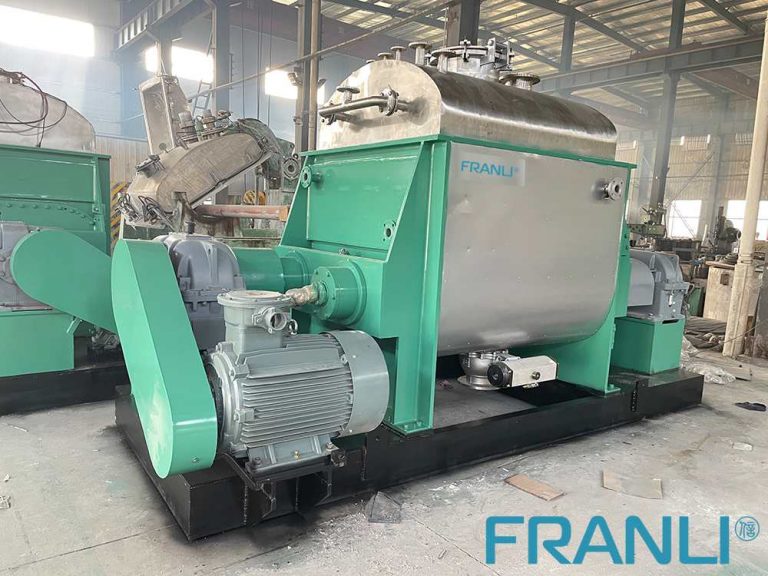
Structural features of laboratory kneader
1. The kneader is composed of two Z-shaped paddles with different rotating speeds to produce strong shearing, extrusion, and stirring so that the viscous materials are mixed quickly and evenly.
2. It can be made into an ordinary type electric heating kneader and vacuum-type electric heating kneader, etc.
3. The heating method adopts steam, oil high-temperature heating, water cooling, and other methods.
4. The laboratory kneader has a variety of discharge methods: hydraulic cylinder dumping, discharge under the ball valve, screw extrusion, etc.
5. The kneader usually adopts a fixed speed design, and can also be designed as a frequency converter according to customer requirements.
During the transmission process of the laboratory kneader, the motor can synchronize the speed, and after passing through the elastic coupling to the reducer, the output device drives the fast pulp to make it reach the specified speed, and the speed can also be adjusted by the frequency converter. The semi-dry state or rubber-like viscous plastic material can make the material react quickly to obtain uniform mixing and stirring due to the strong shearing action generated by a pair of mating and rotating blades (usually Z-shaped).
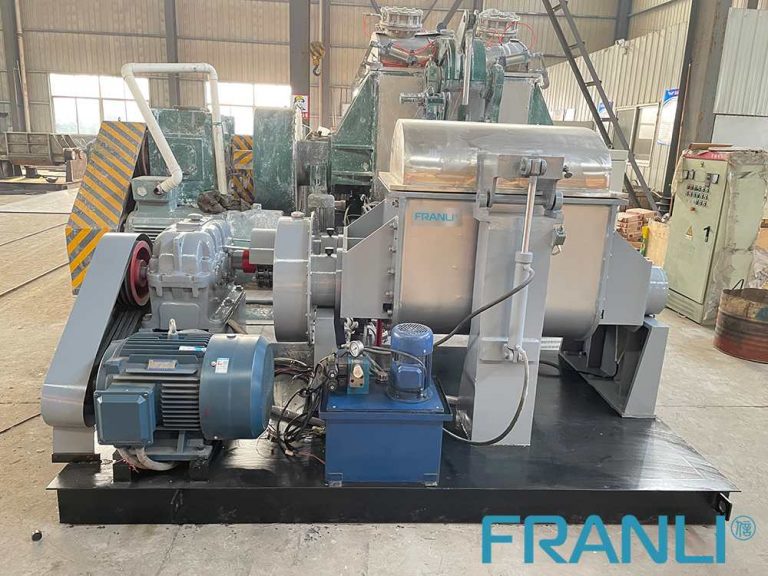
Four motion modes of laboratory kneader
1. The stirring paddle revolves along the wall to make the material move circularly along the cone wall;
2. The stirring paddle rotates to make the material rise from the bottom of the cone along the stirring paddle;
3. The combined movement of the stirring paddle and rotation can make part of the material being absorbed into the cylindrical surface of the stirring paddle, and at the same time, under the action of the centrifugal force of the paddle’s rotation, a part of the material in the cylindrical surface of the agitating paddle is discharged radially to the cone;
4. The ascending material descends under its own gravity. The four kinds of movements produce convection, shearing, and diffusion in the kneader, so as to achieve the purpose of mixing materials quickly and uniformly.

Four stirring paddles for laboratory kneader
1. Fishtail type impeller is very suitable for kneading operation of cellulose material.
2. The z-type stirring paddle is also called the simple-type stirring paddle. It has a simple shape and is used to disperse and mix the pigment in the resin under the condition of high viscosity.
3. The cutting type impeller is a kind of tough impeller, which is suitable for the kneading operation of ultra-high viscosity materials under the condition of high power and heavy load.
4. The σ-type stirring paddle is a common type.
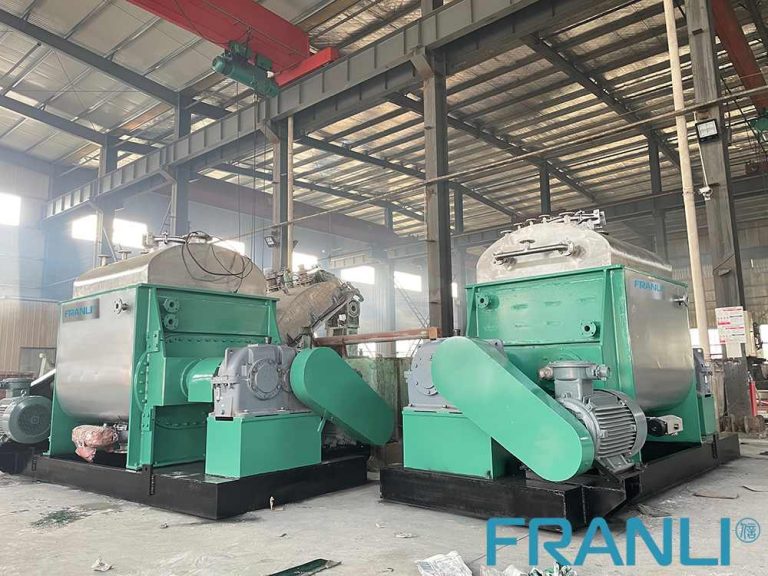
Maintenance and maintenance of laboratory kneader
At present, the kneader is usually welded and fixed on a base, and the equipment can be directly placed on the ground, and the user does not need to install it, which is very convenient. The main maintenance and maintenance measures are as follows:
1. The operator needs to fill the lubricating parts with oil frequently, and adopt the drip oiling type lubrication, and the oil should be added no less than twice per shift, while the press-in type oiling lubrication needs to be pressed into the butter once every 20 days, and the oil pool is also It needs to be replaced every three months.
2. The shaft seal of the wallboard should be adjusted or replaced according to the actual wear condition.
3. Users need to check the steam pipes and joints frequently, and no leakage is allowed.
4. After the machine has been in operation for six months, the user needs to carry out maintenance, check the vulnerable parts and make appropriate repairs or replacements.
5. After the kneader is installed, clean, decontaminate and wipe the anti-rust grease. Check each lubricating point and inject lubricating oil (grease).
6. Check the tension of the V-belt before driving, and move the motor to an appropriate position by adjusting the bolt.
As a professional kneader manufacturer, FRANLI has provided a complete set of mature equipment for related machines and production lines for more than 60 countries and thousands of industries in the world, and in Russia, Turkey, Spain, Brazil, Malaysia, Indonesia, and other regions, it has provided many An enterprise establishes related production lines.
Welcome to send inquiry to us and let’s make a win win business together !
Guidelines For Kneader
The dispersion kneader is suited for rubber and plastic mastication, as well as the blending of different rubber and plastic components. Small and medium-sized rubber and plastics manufacturers with a wide range of product types and colours, as well as food, dyes, pharmaceuticals, and ceramics, can benefit from the internal mixer.
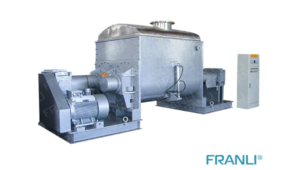
Sigma Kneader: The Solution for Mixing and Kneading
Sigma kneader is a versatile machine that can be used for mixing, kneading, and homogenizing a wide range of materials, including high-viscosity products.
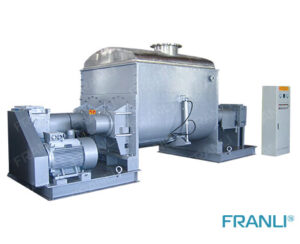
Sigma Mixer: Indispensable Equipment For Manufacturing
Sigma Mixer is a type of mixer that uses a unique mixing principle to achieve an efficient blending of materials. The mixer consists of two blades that rotate in opposite directions, creating a kneading and folding action that ensures thorough mixing. The blades are shaped like the Greek letter Sigma, hence the name Sigma Mixer.

Sigma Blade Mixer: The Mixing Solution
The Sigma Blade Mixer is a robust and reliable mixing machine that uses a unique mixing principle to achieve superior results. It is a type of double-arm kneading mixer that features two blades that rotate in opposite directions.

Vacuum Kneader: A Machine for Your Mixing Needs
The Vacuum Kneader is a type of mixer that utilizes a vacuum chamber to create a homogeneous mix of ingredients. It is designed to knead, mix, and disperse high-viscosity materials under vacuum conditions, resulting in a superior product.

Efficiency and Effectiveness of Dispersion Kneader
The dispersion kneader has complete control over the mixing and blending of the raw materials to create an even mix that allows for better distribution. This device contains a mixing chamber with rotating blades made of high-quality steel.

Vacuum kneader: high efficiency and environmental protection
A vacuum kneader is mainly used for stirring, mixing, and kneading high-viscosity and elastic-plastic materials. The most common fields include high-viscosity sealant, silicone rubber, neutral acid glass glue, chewing gum, bubble gum, aluminum silver paste, silica gel, paper pulp, cellulose, and other materials. It covers food, agrochemical, pharmaceutical, cosmetics, electronic paste, and other industries, and has been sought after by the industry.

